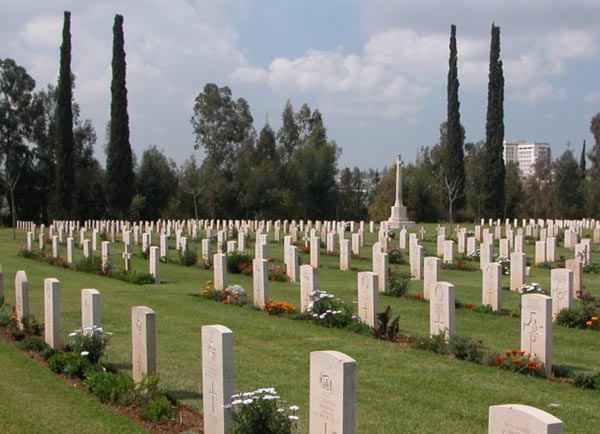James Richards
Return
Private
2nd Battalion Hampshire Regiment
James Richards
Service Number:
380214
Regiment & Unit/Ship
Hampshire Regiment
2nd/5th Battalion
Date of Death
Died 14 April 1918
Buried or commemorated at
RAMLEH WAR CEMETERY
X. 7.
Israel and Palestine (including Gaza)
Country of Service
United Kingdom
Additional Info
Son of Mr. and Mrs. James and Amelia Richards.
Family history
James Richards was born in Clay Mills, Nr. Burton, in Staffordshire, and Amelia Charlotte Coventry was born
in Woodbury Devon. They married in 1811, in Bradfield, Berkshire. Their son James Richards was born on the 10th
June 1884, in Sevenoaks, Kent. In the 1901 and 1911 census' they are living in Grimley, Worcestershire, and
James is a shop keeper, and his son James is an assistant in the shop.
James married Ivy Gertrude Hartley, on the 25th March 1913, at Broadwas, Worcestershire.
Five years later he lost his life in Egypt.
The 2/4th and 2/5th Battalions of the Hapshire Regiment both took part in the attack at Berukin in April 1918,
which had to be called off due to the critical situation on the Western Front. At the end of May the 2/4th left Palestine
for Egypt where the men underwent three weeks of training before embarking for France on 22 May.
James Richards
Rank: Private
Regiment: 2nd/5th Battalion Hampshire Regiment
Service number: 380214
Conflict: WW1
Date of death: Died of wounds on 14th April 1918
Buried: Ramleh War Cemetery, Israel, Grave X. 7.
Birthplace: Sevenoaks, Kent, enlisted Worcester
Memorial: Broadwas St Mary Magdalene Church
Also appears on: Broadwas St Mary Magdalene Church WW1 Roll of Honour.
Credits: Parish magazine researched by Eve Fraser.
Details:
United Parish Magazine, Broadwas, May 1918:
Private James Richards – It is with deep regret we have to announce the death
of one of our Broadwas men. James Richards, who went to Palestine about 10 months ago,
is reported to have died of wounds received on April 11th. We are sure that all parishioners
will join us in deep sympathy with Mrs Richards and the other members of his family in their great loss.
RAMLEH WAR MEMORIAL
HISTORY INFORMATION
The cemetery dates from the First World War, when Ramleh (now Ramla) was occupied by the 1st Australian
Light Horse Brigade on 1 November 1917. Field Ambulances, and later Casualty Clearing Stations, were posted
at Ramleh and Lydda from December 1917 onwards. The cemetery was begun by the medical units, but some
graves were brought in later from the battlefields and from Latron, Sarona and Wilhema Military and Indian Cemeteries.
During the Second World War, this cemetery was used by the Ramla Royal Air Force Station and by various
Commonwealth hospitals posted in turn to the area for varying periods. RAMLEH WAR CEMETERY contains 3,300
Commonwealth burials of the First World War, 964 of them unidentified. Second World War burials number 1,168.
There are also 892 war graves of other nationalities from both wars, and 525 non-war burials, many from the
RAF and garrison stations that were at Ramleh in the inter war years and until the end of the British
Mandate in Palestine in 1948.
Within Ramleh War Cemetery will be found:
The RAMLEH 1914-18 MEMORIAL, erected in 1961 to commemorate more than 300 Commonwealth, German and
Turkish servicemen of the First World War who lie buried in cemeteries elsewhere in Israel where their graves
could no longer be maintained. Only 74 of the casualties are named.
The RAMLEH 1939-45 MEMORIAL, commemorating 28 servicemen and women of various units from the Second
World War, and six non-war casualties of the Palestine Police Force, who lie buried in cemeteries elsewhere in
Israel where their graves could not be maintained in perpetuity.
The original war cemetery was designed by Sir John J. Burnet, but following the addition of the 1939-45
war graves, the site was extensively remodelled in the 1950s by Alan Stewart, ARIBA.
©peh




